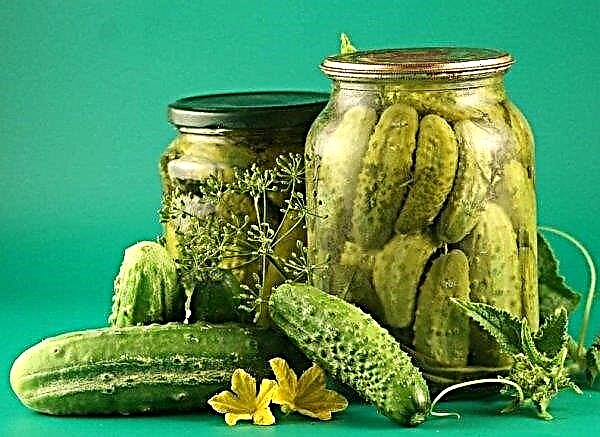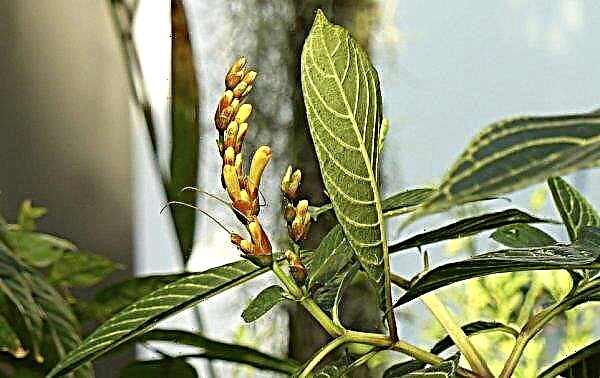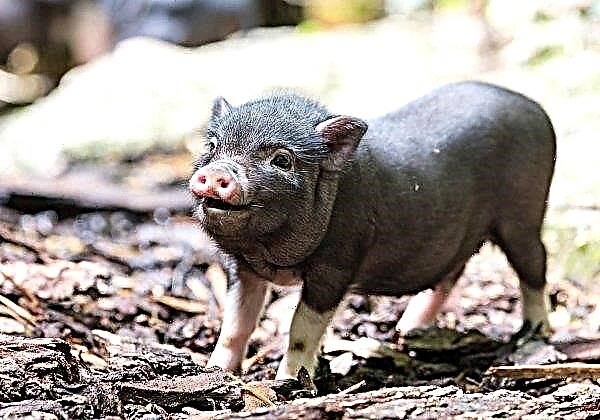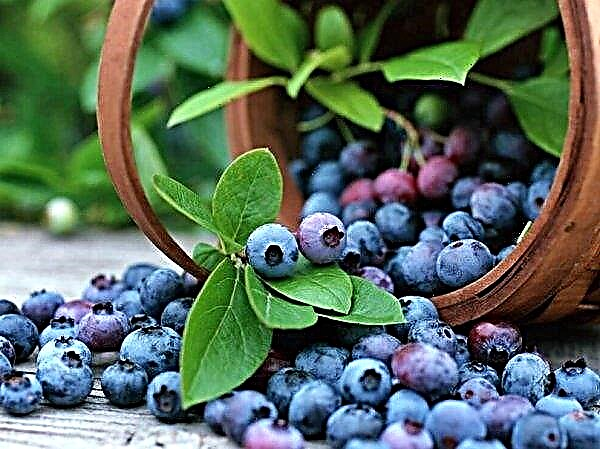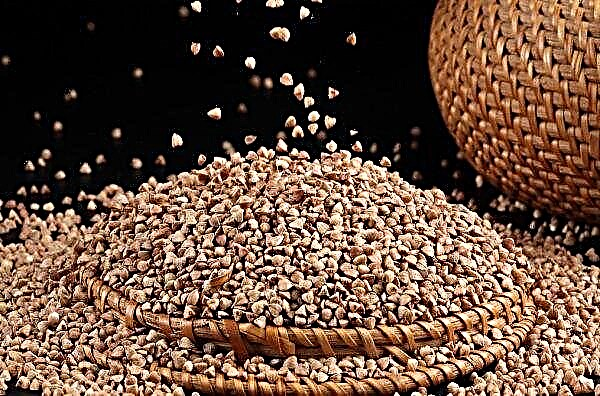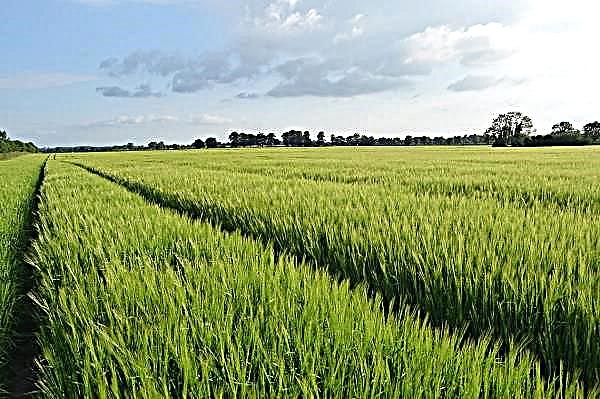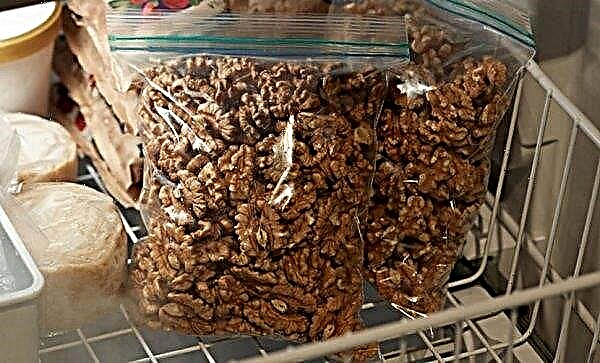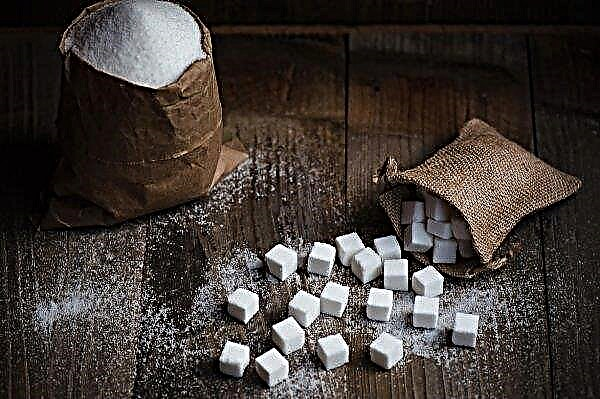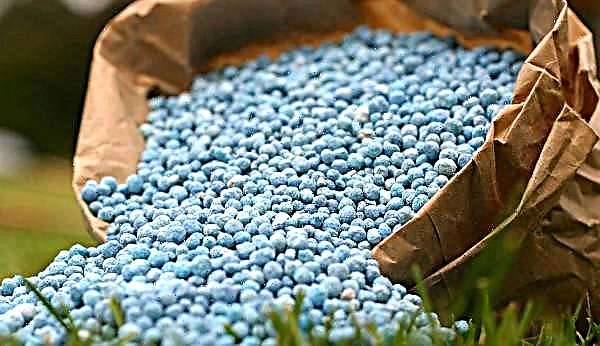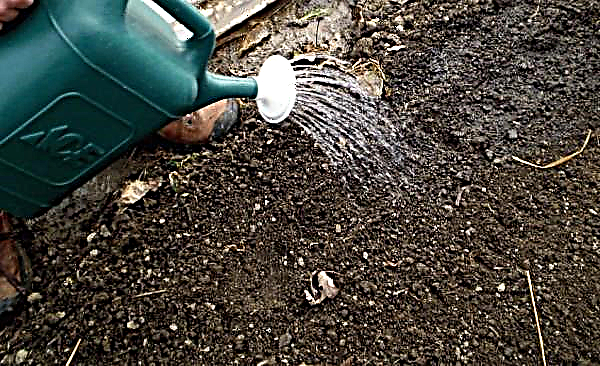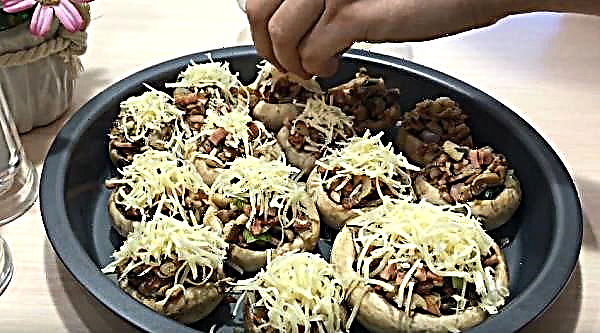In winter and early spring, the human body especially needs vitamins. To meet this need, some vegetable crops began to be planted in the fall. Thanks to this, vitamin salads can be eaten much earlier than the main crop ripens. In the article we will tell you whether it is possible to plant onions in the winter, what varieties, when, at what temperature and how to do it.
Why plant onions in the fall
By planting winter onions in the fall, farmers achieve the main goal - to get an early harvest in spring. Already in April-May, you can dig up a green onion bunch or cut juicy feathers. And the heads fully mature in June-July, which is much earlier than in spring varieties.
Did you know? Onions were greatly appreciated in the Middle Ages during the Crusades. To rescue their soldiers from the Saracen captivity, the French knights exchanged them for bulbs: 8 pieces for one person.
- There are other advantages of winter onion crop planting:
- small onions are suitable for sowing, which is very difficult to preserve before spring planting;
- there is no need for watering, because growth occurs in the earth moist after winter;
- onion turnips have time to mature before the onset of activity of the underlying diseases;
- winter crops are easier to care for than spring ones;
- after an early harvest, the plot is vacated for planting other crops;
- onion heads are large and juicy;
- with proper agricultural technology no arrows are formed;
- frost resistance: frosts can withstand temperatures of -15 ° C in snowless winters, and even lower in snowy winters.

Against the background of the listed advantages, the disadvantages look very slightly.
- These include:
- in severe frosts in snowless winters, productivity may decrease;
- winter bulbs are worse than spring bulbs, but there is often no need to store them in winter.
Selection of onion varieties for winter cultivation
Recently, there are more and more new varieties and hybrids of winter onions. Their feature is that the bulbs rest in the ground in winter, and in the spring they begin to grow in the conditions of short daylight hours. They can form heads in daylight for no longer than 12 hours.
In the fall, you can plant some old, long-grown spring varieties.
But they must meet certain requirements:
- frost resistance;
- short day;
- early and medium ripening.
Did you know? One onion slice contains 6% sugar - this is more than in a pear and an apple. When frying, bitter onions become sweet.
Arzamas
This is an old variety of medium ripening onions. Turnip matures in 90–100 days. 2-3 small heads of 60–90 g are formed in one nest. Dense bulbs are rounded and roundly elongated. The color of dry husks is yellow-brown, and the flesh is white. The taste is spicy. In cooking, both green feathers and turnips are used. Grade Advantages: cold resistance, ability to transport and long-term storage. disadvantages: Suffers from peronosporosis and onion flies.

Danilovsky
The long-known and popular type of onion. Ripening period is average - about 100 days. Nests with 1 or 2 turnips are formed. Heads are medium (80-100 g), flattened. The outer husk is hard, red-violet. The inner petals are juicy, have a lilac hue. The taste is soft, semi-sharp, sweetish. Vegetable is used for raw salads, heat treatment and preservation. The benefits include short days, the ability to be stored well, high productivity and resistance to peronosporosis.

Radar
A variety of Dutch selection, mid-season. Large bulbs have a weight of 150-300 g and flattened-rounded shape. Thick outer scales of light yellow color protect the inner petals from damage.
The taste is pleasant spicy. Advantages: high frost resistance (up to -23 ° С), does not release arrows, is perfectly stored, resistance to diseases.
Red baron
Mid-early variety, unpretentious. Gives good harvests in any conditions. Turnips are large (130-150 g), have a rounded, slightly flattened shape. Dense outer scales stand out in bright red-violet color.
The pulp is pink, juicy, fleshy, peninsular. Appreciated in cooking for its wonderful taste and beautiful color. Does not stain other ingredients of the dish. It is perfectly stored and rarely gets sick.
Senshui
Onion hybrid early ripening. Rounded bulbs ripen large, up to 150–250 g. The color of the husk is brownish-yellow. The pulp is juicy, slightly sharp, sweetish. Suitable for preparing various dishes. The variety has established itself as excellent germination and high productivity, resistance to low temperatures, shooting and disease, as well as excellent keeping quality.
Centurion
Another Dutch mid-early hybrid. It is characterized by good germination, high yields, lack of arrows. Turnips grow medium-sized (100-150 g). They have a rounded and slightly elongated shape. The color of dry scales is golden straw, it is very dense.
The taste is moderately sharp, subject to long-term storage and preservation of presentation in transit.
Shakespeare
The variety is popular for both spring and autumn planting. He is ultra-early, matures in 2.5 months. Bulbs grow medium in size (80–100 g). Golden brown scales are very dense, they are good insulation, protecting from frosts to -18 ° C. The taste of pulp is medium sharp, juicy. The absence of arrows is characteristic.
Stuttgart Riesen
Winter hybrid of German selection of medium early ripening. From the name it is clear that the variety is distinguished by its large size (German: “rizen” - “large”). The average weight of a mature head is 120–150 g. Golden bulbs are round and slightly flattened.
The pulp is juicy, medium sharp. The variety is characterized by cold resistance, resistance to fungal diseases and high productivity.
The technology of growing winter onions
Growing winter onion varieties is easy.
Correct agricultural technology includes:
- land preparation;
- preparation of planting material;
- taking into account time periods.
You can plant sowing in open ground in autumn:
- in August-September (in regions with early autumn frosts), crops enter the winter with 5-6 leaves that will not freeze under the snow;
- in September-October;
- in October-November (in the southern regions) when the air temperature is + 5 ° C.
Important! It is very important to plant onions no later than a month before the frost, so that it has time to take root.
Preparing the landing site
Before landing, you need to choose a suitable site and prepare it.
The place is suitable for growing winter varieties if:
- he is open and unshaded;
- loamy or sandy loamy soil;
- the soil is not acidic, otherwise the seeds will not germinate;
- no nearby groundwater;
- suitable predecessors had grown on it before that.
- onions after onions are planted no earlier than in 3-5 years;
- good predecessors: legumes, all kinds of cabbage, potatoes, tomatoes, cucumbers, cereals, corn, beets and carrots;
- bad predecessors: oats, celery.
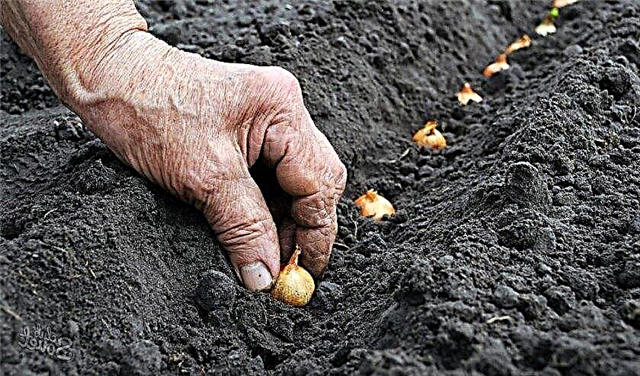
- thoroughly remove weeds;
- dig up;
- apply fertilizer;
- let stand, preferably for 1 month.
- organic matter (humus, ash);
- mineral top dressing (superphosphate, potassium salt, ecophosphate);
- sow green manure, mow it a month before planting and dig along with it.
Important! An ideal option is to fertilize the soil before planting the predecessor crop.
Preparing planting material
There are 2 options for planting material:
- sevc (arpash) - small onions;
- the seeds (chernushka), which ripen onion arrows.

The principles of selection of arpasha are as follows:
- diameter of sets does not exceed 1 cm;
- all onions are solid, have no damage and no signs of rot.
- The advantages of planting a very small arpasha:
- it is not suitable for spring planting, since it will not be preserved during the winter; it is usually rejected;
- does not give a shooter, t. he does not have enough nutrients for this;
- before the start of winter, he does not have the strength to germinate, but in the spring he gives succulent leaves and a large turnip.
Important! Sowing arpash does not need to be soaked before planting, as well as cutting the neck. Otherwise, it will lead to decay.
To select and prepare the seeds, they are dipped in salt water. Bad specimens remain floating on the surface, while good ones sink to the bottom. Only from a full-bodied chernushka will a high-quality arpash grow, suitable for both autumn and spring planting.
Landing technology
The technology of planting and care is completely dependent on the type of seed (sowing or seeds). This affects the timing and methods of sowing.
Sevka
For landing, it is advised to choose cloudy weather. But you can not plant in the rain, because in the wet earth the bulbs rot.
Landing procedure:
- Loosen the ground in the prepared area. If planting is scheduled for August, then the land must first be watered and wait until it dries out a little.
- Make parallel grooves 3-4 cm deep with an interval of 15-20 cm.
- Sevka plants plant roots down at a distance of 5-10 cm, which depends on the size of the expected turnips.
- Sprinkle with dry earth and slightly compact. Some gardeners cover the crops with earth mixed with sand and humus.
- Cover with straw mulch, fallen leaves and branches.
Important! If the bulb is planted deeper than 5 cm, then in the spring it will be difficult for the sprouts to hatch. If the planting depth is less than 3 cm, then the seed can be washed with rain or melt water.
Semen
Some gardeners prefer independent cultivation of seeds from their seeds. This ensures that the onion of the desired variety grows. Nigella can also be sown in the fall. But since it grows worse, it is most often sown in the spring, arpash is collected by autumn, and it is already planted in the winter.
Seed Planting Tips:
- sowing dates: as soon as the snow melts and the earth ceases to be solid (in different regions at different times);
- landing pattern: depth - 1.5–2 cm, width - 5 cm, row spacing - convenient for weeding;
- sowing process: Sow densely, and then thin out the sprouts or sow immediately at a distance of 5 cm, so as not to thin, then sprinkle with earth and compact;
- after emergence they need to be necessary water, weed and loosen;
- fertilizers do not need crops.
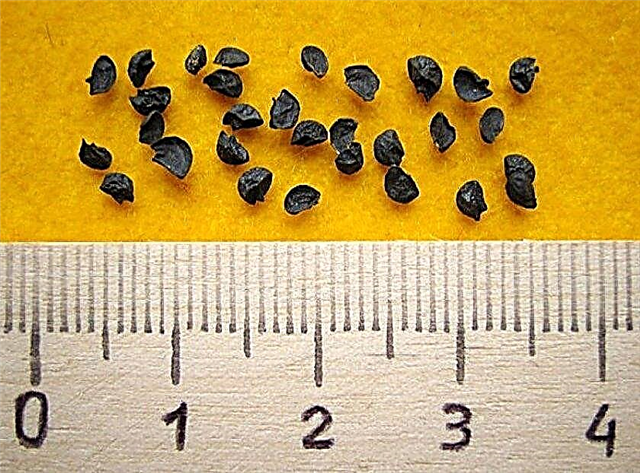
Planting Care Features
Caring for winter onions is divided into two stages: autumn and spring.
Only early plantings (in August) need autumn care.
It is as follows:
- water as needed if there has been no rain for 20 days in a row;
- regularly loosen and weed the beds;
- fertilizer is not necessary, so that before winter the sprouts do not strongly grow;
- Before frost, check for diseases (usually powdery mildew) and, if necessary, treat with fungicide;
- Before winter, cover with a thick layer of mulch (dry leaves, peat, straw and crush branches from above) or white agrofiber.
Spring care includes:
- harvesting agrofibre or reducing the layer of mulch when the frost is gone;
- watering may not be needed for a long time (often until May), which depends on how early the spring is and how often it rains;
- mandatory loosening and weeding (carefully, so as not to damage the growing turnips), loose soil contributes to the active growth of turnips;
- fertilizer (a solution of mullein or chicken droppings), but excessive feeding will badly affect the turnip.
Pest and Disease Control
Pests do not threaten autumn landings, because they are no longer at this time. But in wet weather there is a danger of development powdery mildew. And in late spring and early summer, when the crop matures, onions become the target of insects: onion flies, tobacco thrips, nematodes, scoops and bears. To combat them, there are many fungicides ("Fital", "Quadris") and insecticides ("Aktara", "Medvetoks").
To prevent diseases and insect attacks, you must:
- observe crop rotation rules: do not plant onions after onions and after crops that are sick with the same diseases and attract the same insects;
- before planting, treat the earth with a solution of potassium permanganate or a chemical agent;
- in the spring next to onion rows sow carrots, marigolds or calendula;
- sprinkle tobacco dust, wood ash between the rows (can be mixed with mustard or lime);
- use plant infusions of dope, marigold, bleached, alkaloid lupine for spraying (suitable not only for prevention, but also for controlling harmful insects).

When and how to harvest
The timing for ripening an onion crop depends on the region, weather conditions and variety. Usually a full turnip is formed in May, and by June-July it fully matures
A bow can be removed if:
- onion heads are covered with dry husk of the color characteristic of the variety (yellow, brown, red, purple);
- the leaves are lodging and are already drying out.
- Carefully dig a shovel or pitchfork, being careful not to damage the bulbs.
- Pull the fruits out of the ground.
- Arrange the collected vegetables in the fresh air to dry.
- Sort out onions: unripened turnips and with thick necks set aside for consumption in the first place, that is, they will not lie for long.
- When the leaves and roots are completely dry, the crop can be harvested in storage.

The agricultural technique of growing winter onions is slightly different from the usual spring method. However, this technology is less troublesome, but more rewarding.






